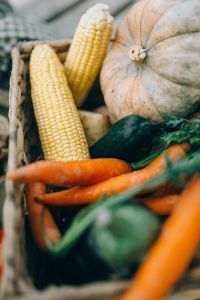As the heat of summer begins to fade, fall emerges as one of the most exciting times for gardeners in Florida. With milder temperatures and a drop in humidity, it’s the perfect season to plant, cultivate, and enjoy the bountiful rewards of your hard work. Here’s a guide to help you make the most of your fall gardening experience on your homestead.
1. Understanding Florida's Unique Climate
Florida's climate varies from the northern to the southern regions, but generally, the fall months (September to November) offer a reprieve from the intense heat. Here are some tips for adapting to the climate:
- Choose the Right Plants: Fall is ideal for cool-season crops. Consider planting leafy greens, root vegetables, and herbs that thrive in cooler temperatures.
- Watch the Frost Dates: In North Florida, the first frost can occur as early as late October. In South Florida, frost is rare, but be aware of microclimates in your area.
2. What to Plant in the Fall
Vegetables:
- Leafy Greens: Spinach, kale, and Swiss chard are great options. They thrive in cooler temperatures and can be harvested over a long period.
- Root Vegetables: Carrots, radishes, and beets are excellent fall choices. They can be directly sown into the ground and will flourish in the cooler weather.
- Brassicas: Broccoli, cauliflower, and cabbage are all suited for fall planting. Start them as transplants for the best results.
Herbs:
- Consider planting cilantro, parsley, and dill. These herbs love the cooler weather and will enhance your fall dishes.
Flowers:
- Add some color to your homestead with fall-blooming flowers like marigolds, snapdragons, and pansies. They not only beautify your space but can also attract beneficial pollinators.
3. Preparing Your Soil
Fall is a great time to amend your soil:
- Test Your Soil: A soil test can inform you of nutrient deficiencies and pH levels.
- Add Organic Matter: Incorporate compost or well-rotted manure to improve soil structure and fertility.
- Mulch: Applying mulch helps retain moisture, suppress weeds, and maintain a more stable soil temperature.
4. Watering Wisely
While fall brings relief from summer heat, Florida can still be dry. Here are some watering tips:
- Monitor Soil Moisture: Check the moisture level before watering. Overwatering can be just as detrimental as underwatering.
- Use Drip Irrigation: Consider installing a drip irrigation system to deliver water directly to the roots, minimizing waste.
5. Pest Management
As the seasons change, so do the pests. Here are some natural ways to keep them at bay:
- Companion Planting: Planting certain crops together can naturally deter pests. For example, marigolds can repel nematodes.
- Regular Monitoring: Check your plants regularly for signs of pests or disease. Early intervention is key.
6. Harvesting and Enjoying Your Bounty
As your plants thrive, don’t forget to enjoy the fruits of your labor:
- Harvest Regularly: Many vegetables benefit from regular harvesting, which can encourage further production.
- Preserve Your Produce: Consider canning, freezing, or dehydrating your harvest to enjoy it throughout the winter months.
7. Planning for Winter
Even in Florida, some preparations for winter are necessary:
- Cover Crops: Planting cover crops like clover can help improve soil health and prevent erosion.
- Cold Frames: If you’re in a cooler area, consider building cold frames to extend your growing season.
Fall is a rewarding time for Florida gardeners on their homesteads. With careful planning and consideration of your local climate, you can cultivate a thriving garden that will provide nourishment and beauty. Embrace the season, experiment with new plants, and enjoy the journey of growing your own food. Happy gardening!


